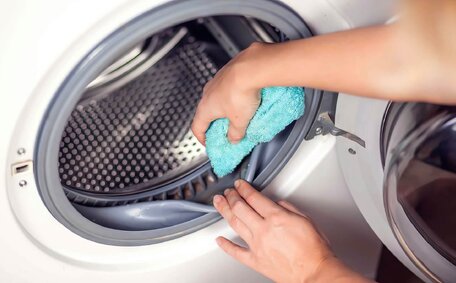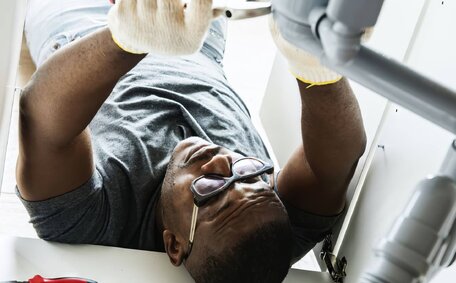What is Trenchless Relining?
Trenchless pipe relining repairs or replaces underground pipes without extensive trenches or disrupting surfaces, offering a streamlined solution for fixing pipes under infrastructure.
The method entails inserting a flexible liner within the damaged pipe, essentially forming a new pipe inside the old one to restore flow and function rapidly, eco-consciously, and with minimal disruption, unlike the intensive digging for traditional replacements.
How Trenchless Relining Works
The trenchless relining process involves several key steps:
- Inspection: First, a camera inspection is done to assess the condition of the existing pipe, identify any damage or defects, and measure the pipe diameter.
- Cleaning: Next, high-pressure water jets are used to thoroughly clean the interior of the pipe and remove any built-up deposits or debris.
- Lining Insertion: After preparation, a resin-infused liner with felt or fibreglass reinforcement is introduced into the pipe. This flexible liner conforms to the existing pipe’s contours.
- Curing: The liner is expanded with air and UV light hardens the resin, bonding it seamlessly to the existing pipe.
- Repair connections: Any affected lateral connections, joins or branches are reinstated to restore proper functionality and flow.
- Final testing: Lastly, final CCTV inspections and pressure tests check water-tightness, repair quality, and restored flow capacity.
Pipe Bursting
Pipe bursting is a specific trenchless relining technique used when an old pipe is so damaged that it needs to be completely replaced. This method bursts apart the existing pipe while simultaneously installing a new pipe in its place.
A cone-shaped bursting head is fed through the old pipe, breaking it into fragments that remain in the surrounding soil. At the same time, the new replacement pipe (usually HDPE or PVC material) is attached and pulled in behind the bursting head.
Pipe bursting may be a good option for completely replacing sewer lines made of old earthenware, concrete or PVC pipes suffering major wear, cracks, breaks or root ingress issues. It offers a budget-friendly means of enhancing pipe performance and durability with negligible surface impact.
Cured-in-Place Pipe Lining
Cured-in-Place Pipe (CIPP) lining is another common trenchless relining technique. It involves inserting a resin-coated felt tube into the damaged pipe and curing it in place to form a new lining.
Unlike pipe bursting which breaks apart the old pipe, CIPP lining leaves the existing pipe intact. The flexible resin lining elegantly conforms to the inside old pipe’s walls, creating a jointless, watertight 'pipe within a pipe.'
CIPP lining is suited for pipe repair in pipes suffering from cracks, fractures, root ingress or deterioration. It can restore structural stability and flow capacity without having to replace the entire pipe. This renders it a quicker, greener, and less intrusive alternative to classical pipe installation.
It’s a cost-effective, long-lasting repair method that upgrades functionality while minimising surface disruption.
Comparing Trenchless vs Traditional Methods
When comparing trenchless relining methods against traditional pipe replacement, there are several key differences that show the clear benefits of modern trenchless techniques:
Cost Savings
Trenchless relining can cut costs by up to 80% over traditional excavation and pipe replacement. There are no expenses for pavement removal, excavation, or surface restoration. It also avoids water or gas line relocation costs.
Minimal Disruption
The trenchless method requires only small entry points instead of extensive trenches, leading to significantly less disruption. This minimises disturbance to traffic, landscaping, and surrounding infrastructure.
Shorter Repair Time
Consequently, repairs are completed more swiftly, reducing downtime for essential utilities and infrastructure.
Lower Environmental Impact
When to Use Trenchless Relining
Trenchless relining is the ideal solution when you need to repair or replace underground pipes without extensive digging. It can fix a wide range of drainage issues quickly and cost-effectively.
Common problems that benefit from trenchless relining, such as drain pipe repair, include pipe leaks, cracks, blockages from tree roots or build-up, joint misalignment, and general wear or corrosion damage. Essentially, if you’re asking yourself 'do I require relining?', ponder whether your pipe is letting water escape or permitting intrusions, resulting in drainage or flow issues.
As trenchless methods necessitate only modest entry points, the disruption to surfaces is minimised.
For significant main sewer issues, it’s prudent to enlist an experienced plumber for a comprehensive site assessment.
The Step-by-Step Trenchless Relining Process
Initially, a CCTV inspection involves guiding a camera throughout the pipe length to pinpoint damages, blockages, and imperfections. Exact problem areas are located and the condition assessed to determine if relining is suitable.
Subsequently, the pipe’s interior is rigorously purified with high-pressure water to clear deposits, roots, and debris, readying the surface for the relining.
- A liner tube, blending felt or fibreglass with thermoset resin, is threaded into the pipe via an existing entry such as a manhole.
- The liner tube is inflated against the pipe walls using air pressure and the ends sealed off.
- Hot water is circulated into old pipe structures to heat the tube, setting off the curing reaction and hardening the resin into a smooth, jointless lining.
- After cooling, robotic cutters reinstate connections to lateral joins, pipes, and outlets re-establishing flow.
The result is a renewed 'pipe-within-a-pipe’ with enhanced function and integrity, achieved without extensive digging.
Inspection and Diagnosis
The first critical step in the trenchless relining process is a thorough inspection and diagnosis of the damaged pipe. Highly trained professionals use state-of-the-art CCTV camera equipment to get a detailed look inside the old pipe.
Factors like the pipe material, extent of damage and presence of any encrustations or root ingress will determine whether the pipe is a good candidate for trenchless relining versus full replacement.
This detailed diagnosis process is vital for gathering information about the unique conditions present and developing an optimised trenchless relining solution. It provides invaluable information to ensure the selected relining method results in long-lasting, quality repairs that restore functionality to Cambridge Park’s vital underground pipe infrastructure.
Pipe Cleaning and Preparation
Thorough pipe cleaning and preparation is a critical step before installing the new liner. Any debris, roots, grease or mineral deposits left on the old pipe walls can prevent the liner from properly adhering or curing.
High-pressure water jets rigorously clean the pipeline’s interior.
In some cases where heavy build-up exists, rotating mechanical agitators might also be employed.
Proper cleaning and surface prep allows the trenchless lining to bond tightly to the sewer lines’ walls, creating a durably repaired 'pipe within a pipe’ that will last for decades without leaks or failures.
Liner Installation
Overview of the Trenchless Relining Process
The liner installation process is a crucial part of the trenchless relining technique. It involves inserting a new pipe lining into the old damaged pipe without the need for extensive excavation. Here’s a step-by-step guide to the liner installation process:
Inspection and Diagnosis: A CCTV camera is fed through the entire pipe to identify any damage, blockages or defects. The problem areas are located, and the condition is assessed to determine if relining is suitable.Benefits of Trenchless Relining
- Cost Savings: Trenchless relining costs 50-80% less than traditional pipe replacement since no excavation or surface restoration is required.
- Minimal Disruption: Small access pits mean very little disturbance to landscapes, traffic and infrastructure compared to large trenches.
- Quick Repairs: Drain relining installation takes just hours or days rather than weeks or months for pipe replacement.
- Durable Solution: The new pipe lining extends the life of the pipe by 50+ years.
- Eco-Friendly: Avoided excavation significantly reduces environmental impact with 40% less carbon emissions.
With advantages like these, it’s easy to see why trenchless relining is becoming the preferred method for critical pipe repairs here in Cambridge Park. It upgrades drainage function without the mess and disruption of traditional dig-ups and replacement.





